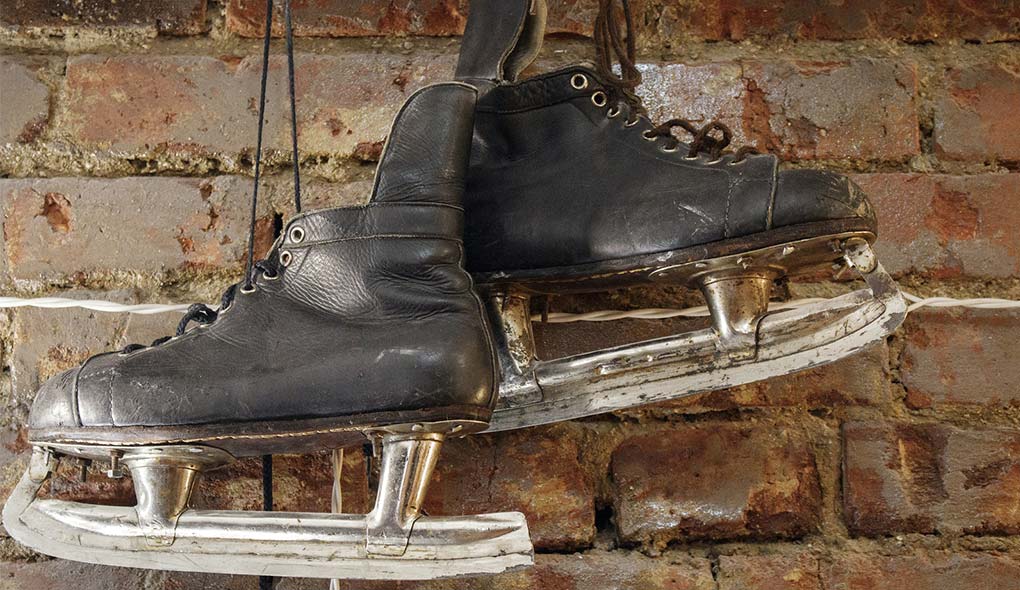Ice Hockey History! Ice hockey originated in Canada in the 19th century. It quickly became popular and spread to other countries.
Ice hockey’s roots trace back to stick-and-ball games played in Europe. Canadians adapted these games, creating a fast-paced sport played on ice. The first organized game took place in Montreal in 1875. This event marked the beginning of modern ice hockey.
The sport’s popularity soared, leading to the formation of leagues and tournaments. The Stanley Cup, first awarded in 1893, became the ultimate prize. Ice hockey’s appeal transcends borders, with professional leagues in North America and Europe. The sport’s inclusion in the Winter Olympics further elevated its status. Today, millions of fans worldwide follow ice hockey passionately.
Ancient Roots
Ice hockey has deep and fascinating ancient roots. It began with simple stick and ball games. These early games laid the foundation for modern hockey. Let’s explore these early influences.
Early Stick And Ball Games
Early stick and ball games date back thousands of years. These games were played by ancient civilizations. People used sticks to hit balls or other objects.
| Civilization | Game Name | Details |
|---|---|---|
| Egyptians | Stick and Ball | Played over 4,000 years ago with curved sticks and balls. |
| Greeks | Episkyros | Team game involving a ball and sticks. |
| Romans | Harpastum | Included elements of stick and ball play. |
Precursors To Modern Hockey
Several medieval games influenced modern hockey. These games were played on fields or frozen ponds.
- Shinty: A Scottish game with sticks and balls on grass or ice.
- Bandy: Played on ice with curved sticks and a ball.
- Hurling: An Irish field game with sticks and a small ball.
These games shared common elements with hockey. They used sticks to control and hit objects. They were often team-based and competitive.
:max_bytes(150000):strip_icc()/Canadian_ice_hockey_team_at_the_1936_Winter_-Olympics_3402755-58b8da283df78c353c2347c8.jpg)
Credit: www.liveabout.com
Birth Of Ice Hockey
Ice hockey’s history is fascinating and full of exciting moments. The game’s origins are rooted in ancient stick-and-ball games. These games evolved over centuries, culminating in modern ice hockey.
First Recorded Games
The first recorded ice hockey game took place in 1875. This game was played in Montreal, Canada. It was held indoors at the Victoria Skating Rink.
Before this game, people played similar games on frozen ponds. These games were less organized and had no formal rules. The Montreal game set the stage for organized ice hockey.
The players used a wooden puck instead of a ball. They wore basic gear, including skates and sticks. This game marked the start of modern ice hockey.
Development In Canada
Canada played a crucial role in developing ice hockey. The sport grew rapidly in the late 1800s. Many Canadian cities formed local teams and leagues.
In 1886, the Amateur Hockey Association of Canada was formed. This was the first official hockey organization. It created standardized rules for the game.
By the early 1900s, ice hockey had become Canada’s national sport. The Stanley Cup was introduced in 1893. It remains the most prestigious trophy in hockey.
Canadian innovations shaped ice hockey into the sport we know today. These include the creation of organized leagues, structured rules, and professional teams.
Formalizing The Game
Ice hockey’s history is rich and exciting. The sport evolved from informal contests on frozen ponds to a formalized game with established rules and leagues. This transformation made ice hockey more exciting and competitive.
Creation Of Rules
The first set of official ice hockey rules was created in 1875. James Creighton, a Canadian, played a key role. He introduced the game to Montreal. Creighton’s rules were based on field hockey but adapted for ice. The game was played with nine players on each side.
Over time, the rules evolved to make the game safer and fairer. In 1886, the Amateur Hockey Association of Canada (AHAC) was formed. The AHAC standardized the rules. They reduced the number of players to seven. This change made the game faster and more exciting.
| Year | Rule Change |
|---|---|
| 1875 | The first official rules by James Creighton |
| 1886 | Formation of AHAC and standardization of rules |
Formation Of Leagues
In 1893, the first league was formed: the Ontario Hockey Association (OHA). The OHA helped organize teams and competitions. This structure made the sport more popular. In 1910, the National Hockey Association (NHA) was created. The NHA later became the National Hockey League (NHL) in 1917.
The NHL started with just four teams. Today, it has 32 teams. The league expanded to the United States in 1924. The Boston Bruins were the first American team. This expansion helped grow the sport’s popularity even further.
- 1893: Ontario Hockey Association (OHA)
- 1910: National Hockey Association (NHA)
- 1917: National Hockey League (NHL)
- 1924: Expansion to the United States
These leagues provided structure and competition. They helped the sport grow and evolve. Ice hockey became a major sport worldwide.

Credit: blog.purehockey.com
Expansion Worldwide
Ice hockey, a thrilling and fast-paced sport, has grown beyond borders. Its popularity has spread from its origins to many parts of the world.
Introduction To Europe
Ice hockey first made its way to Europe in the early 20th century. Switzerland held one of the earliest European championships in 1910. The sport quickly gained traction in countries like Sweden, Finland, and Russia.
Sweden and Finland established strong national leagues. Russia’s love for the game grew through the Soviet Union’s dominance in international competitions. These countries have produced many talented players who dominate the sport today.
| Country | Significant Milestone |
|---|---|
| Switzerland | First European championship in 1910 |
| Sweden | Established a strong national league |
| Russia | Soviet Union’s dominance in international competitions |
Growth In North America
Ice hockey’s roots in North America are deep. Canada is the birthplace of modern ice hockey. The first organized game was played in Montreal in 1875. The National Hockey League (NHL) was founded in 1917 and has become the premier professional league.
The United States also embraced the sport. The American Hockey League (AHL) and college hockey leagues have grown in popularity. Many U.S. cities now have NHL teams, spreading the sport’s appeal.
- Canada: First organized game in 1875
- NHL: Founded in 1917
- USA: Growth of AHL and college hockey
Ice hockey’s worldwide expansion continues. The sport brings excitement and passion to fans everywhere.
Olympic Debut
The Olympic debut of ice hockey marked a significant milestone in the sport’s history. It showcased the sport on a global platform and brought it into the international spotlight. This debut played a crucial role in the development and popularity of ice hockey worldwide.
First Olympic Appearance
Ice hockey made its first Olympic appearance in the 1920 Summer Olympics in Antwerp, Belgium. This may seem unusual as ice hockey is a winter sport. The sport was included in the Summer Games due to the lack of a separate Winter Olympics at that time.
The 1920 Olympic ice hockey tournament featured six teams: Belgium, Canada, Czechoslovakia, France, Sweden, and the United States. Canada dominated and won the gold medal. Their team, the Winnipeg Falcons, showcased their superior skills and strategy.
Impact On Global Popularity
The inclusion of ice hockey in the Olympics had a significant impact on the sport’s global popularity. It helped to introduce the sport to new audiences and countries, increasing its fan base.
After the 1920 Olympics, ice hockey continued to grow. The first Winter Olympics, held in 1924 in Chamonix, France, included ice hockey as an official event. This further solidified the sport’s place on the international stage and contributed to its widespread appeal.
The Olympics played a key role in promoting ice hockey worldwide. The exposure helped in the formation of national teams and leagues in various countries. This expansion contributed to the sport’s rich history and ongoing popularity.

Credit: www.thecanadianencyclopedia.ca
Technological Advances
Ice hockey has evolved greatly over the years. One major factor in its evolution is technological advances. These advances have transformed equipment, gameplay, and the overall experience.
Evolution Of Equipment
The equipment used in ice hockey has changed a lot. Early players wore basic gear. Today, players wear advanced equipment for protection and performance.
| Era | Equipment |
|---|---|
| The early 1900s | Leather skates, wooden sticks, minimal padding |
| 1950s | Plastic helmets, more padding, better skates |
| 2000s | Carbon fibre sticks, lightweight pads, advanced helmets |
- Carbon fibre sticks are lighter and stronger.
- Advanced helmets offer better protection.
- Lightweight pads improve mobility.
Impact On Gameplay
These technological advances have also impacted gameplay. Players can now skate faster, shoot harder, and play safer. New equipment has led to a faster-paced game.
- Faster skates allow for quicker movements.
- Better sticks enable stronger shots.
- Improved protection reduces injuries.
With better gear, players can focus more on skills. This has led to a higher level of play. Fans enjoy watching these exciting games.
Historic Matches
Ice hockey has a rich history filled with unforgettable matches. These games have shaped the sport and left a lasting legacy. Let’s dive into some of the most historic matches in ice hockey.
Legendary Games
Certain matches stand out due to their impact and excitement.
- 1980 Winter Olympics – The “Miracle on Ice”: The USA defeated the Soviet Union.
- 1972 Summit Series: Canada faced the Soviet Union in an eight-game series.
- 1994 Stanley Cup Finals: The New York Rangers won after a 54-year drought.
Iconic Moments
These moments are etched in the memories of ice hockey fans.
- Bobby Orr’s Flying Goal (1970): Orr scored the winning goal while airborne.
- Paul Henderson’s Goal (1972): Henderson scored the series-winning goal in the Summit Series.
- Wayne Gretzky’s 802nd Goal (1994): Gretzky broke the record for the most goals scored.
| Event | Year | Highlight |
|---|---|---|
| Miracle on Ice | 1980 | The USA defeated the Soviet Union |
| Summit Series | 1972 | Canada vs. Soviet Union |
| Stanley Cup Finals | 1994 | Rangers won after 54 years |
Modern Era
The modern era of ice hockey began in the late 20th century. This period saw significant changes in the game, making it faster and more exciting. Innovations in equipment, rules, and player training revolutionized the sport.
Current Leagues
Today, ice hockey is played globally with several prominent leagues.
- National Hockey League (NHL): The NHL is the most popular league. It has 32 teams from the USA and Canada.
- Kontinental Hockey League (KHL): The KHL is based in Russia. It includes teams from Europe and Asia.
- Swedish Hockey League (SHL): The SHL is Sweden’s top league. It is known for its high skill level.
- Finnish Liiga: The Liiga is Finland’s premier league. It is famous for developing young talent.
Future Of Ice Hockey
The future of ice hockey looks bright with many exciting changes ahead.
- Technology: Advanced technology will enhance player performance and fan experience. Virtual reality and AI will play key roles.
- Global Expansion: Ice hockey will grow in non-traditional markets. Countries like China and India show increased interest.
- Youth Development: More focus will be on developing young players. Grassroots programs will help nurture future stars.
In the modern era, ice hockey continues to thrive and evolve. Exciting times lie ahead for fans and players alike.
Frequently Asked Questions
What Is The Origin Of Ice Hockey?
Ice hockey originated in Canada in the 19th century. The game evolved from stick-and-ball games. The first indoor game was played in 1875 in Montreal.
Who Invented Ice Hockey?
James Creighton is credited with inventing ice hockey. He organized the first indoor game in Montreal. His rules and equipment shaped the sport.
When Was The First Ice Hockey Game Played?
The first recorded indoor ice hockey game was played in 1875. It took place in Montreal, Canada. This game set the foundation for modern ice hockey.
How Did Ice Hockey Spread Internationally?
Ice hockey spread internationally through Canadian immigrants and soldiers. It became popular in Europe and the United States. The sport was included in the Olympics in 1920.
Conclusion
Ice hockey has a rich and fascinating history. From its origins to modern-day popularity, it has captivated fans worldwide. The evolution of the sport reflects cultural and technological advancements. As we celebrate its legacy, ice hockey continues to inspire and entertain.
Dive into this exhilarating sport and experience its enduring thrill.




